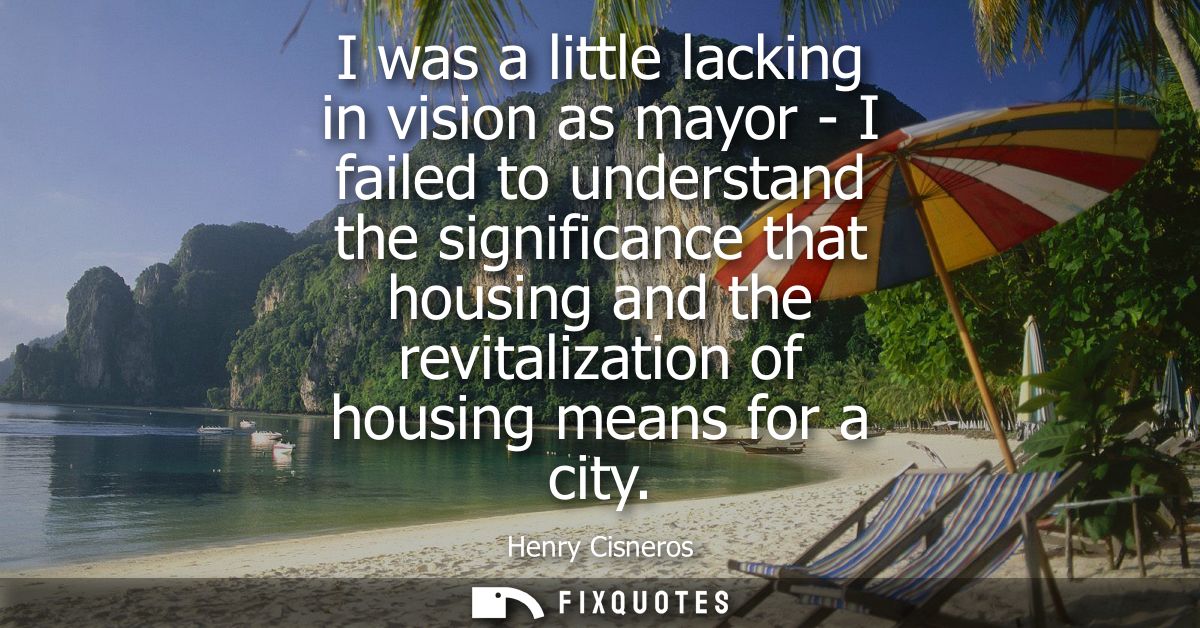"I was a little lacking in vision as mayor - I failed to understand the significance that housing and the revitalization of housing means for a city"
About this Quote
A rare admission of shortfall reveals a deeper lesson about urban leadership: vision is not only about marquee projects or short-term economic wins; it hinges on recognizing the foundational systems that quietly determine every other outcome. Housing sits at the core of that foundation. Where homes are stable, safe, and affordable, children stay in school, workers keep jobs, small businesses thrive, health burdens lessen, and neighborhoods accrue the trust necessary for civic life. Where housing is neglected, the city pays compound interest on disinvestment: declining tax base, rising public safety costs, school churn, deteriorating infrastructure, and frayed social ties.
Revitalization is more than repairing structures. It is the reweaving of neighborhood fabric, streetscapes, transit access, parks, local retail, community institutions, and the pride residents take in place. It is slow, often invisible work, which is precisely why political calculus can undervalue it. Leaders may be tempted by projects that cut ribbons and yield quick headlines, while the payoffs of housing policy mature over years. Yet few investments return more, measured in stability, mobility, and dignity.
There is also an ethical dimension. Housing policy defines who gets to belong. Revitalization done without safeguards can trigger displacement; done thoughtfully, it expands opportunity. Tools such as preservation of affordable units, community land trusts, inclusionary housing, anti-displacement funds, and code enforcement paired with assistance can align physical improvements with social equity. The challenge is to connect the bricks-and-mortar to resident well-being, and to plan with communities rather than for them.
The underlying message reframes municipal priorities: treat housing as essential infrastructure and a platform for opportunity. Address root causes rather than symptoms, invest in homes to reduce crime, in neighborhoods to bolster schools, in energy-efficient retrofits to advance climate resilience. Vision, in this sense, is the ability to see how roofs and rents determine the city’s trajectory, and the humility to recalibrate policy when that truth becomes clear.
About the Author

